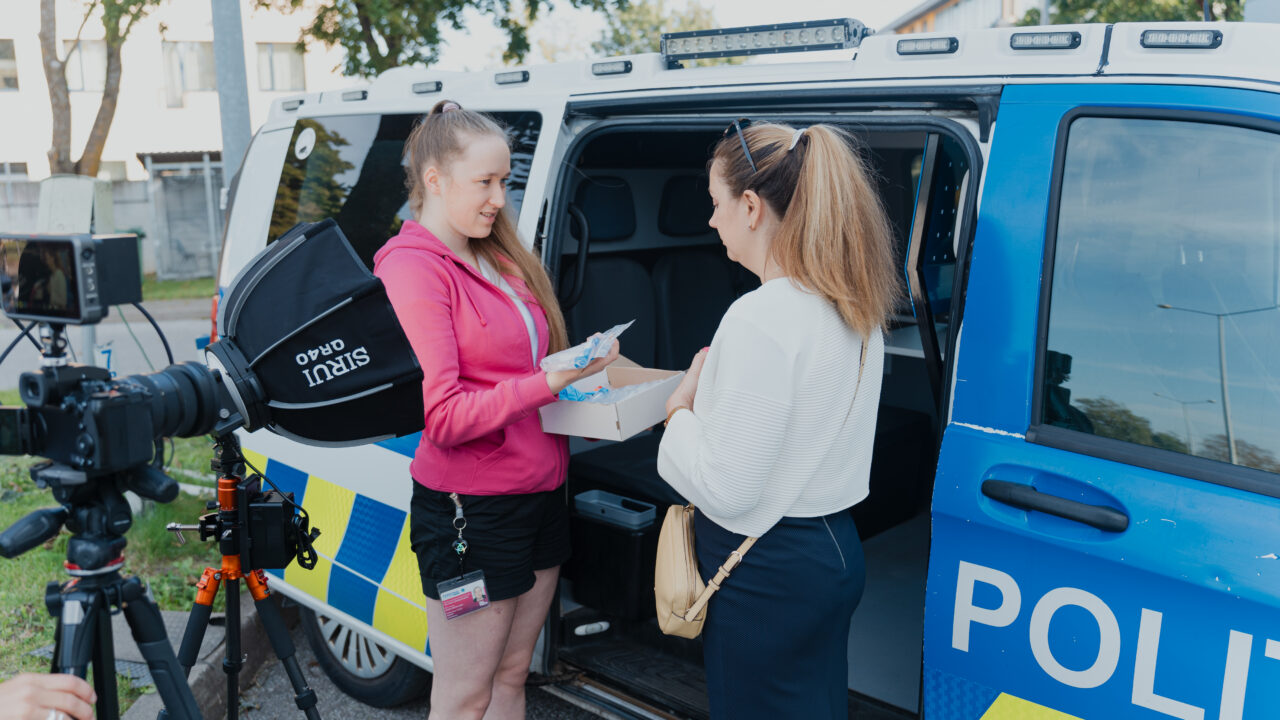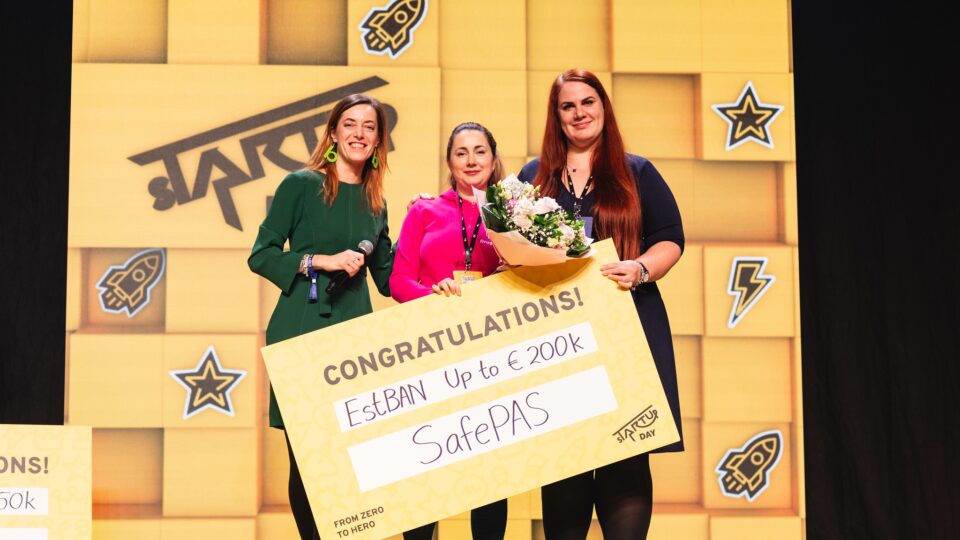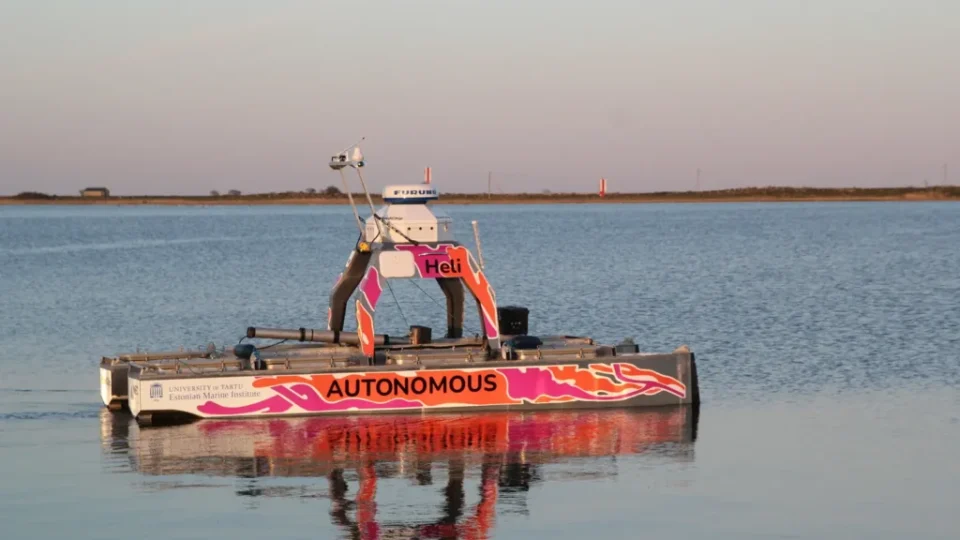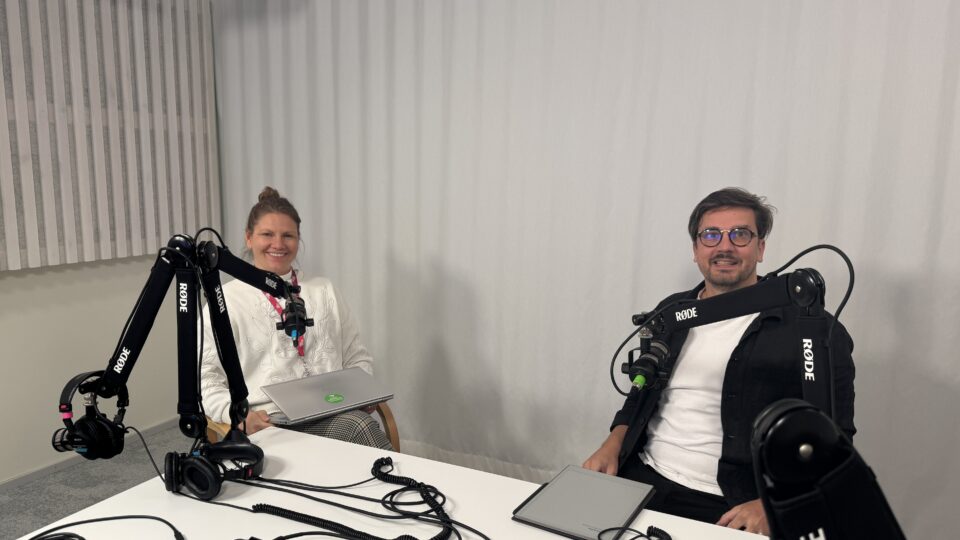While drug testing has so far required either lab analysis or imprecise rapid tests, Drug Hunter offers law enforcement a fast and accurate solution that can be used directly in a police van or station. “The foundation’s support confirms the quality and relevance of our scientific work and its practical application,” said SafePAS co-founder and TalTech School of Science assistant professor of innovative analytics at the Department of Chemistry and Biotechnology, Jekaterina Mazina-Šinkar.
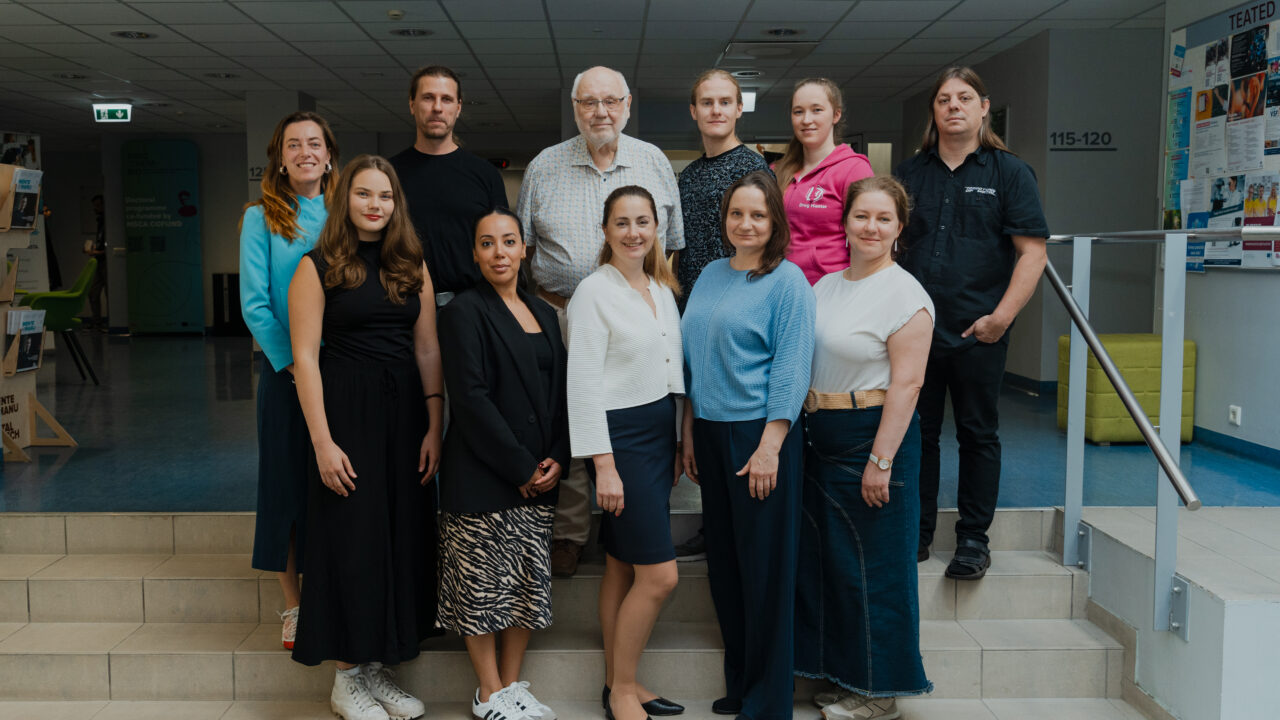
The SafePas team. Co-founder Jekaterina Mazina-Šinkar, assistant professor of innovative analytics at the Department of Chemistry at TalTech's School of Science, front center. Photo: SafePas
Clarity in minutes, not months
At present, patrol officers use pregnancy-style test strips for rapid drug screening. These tests can only indicate the general class of substance used, without identifying the specific drug or its concentration in the body. The results are often unreliable – depending on the test, false positives occur in 20–40% of cases. This means that even a completely sober person may fall under suspicion, have their journey interrupted, and be sent for forensic analysis.
Then comes the wait. Although queues in Estonia are shorter than in many other countries, they can still extend for months. During this time, the person is unable to drive and remains in limbo. If the test result later proves negative, the police bear the cost; if positive, it is paid by the offender.
The SafePas device makes testing significantly more accurate. “It measures not only the presence of a substance in the body but also the quantity – how much of the illegal substance is actually present in the saliva. A quantitative result also enables estimation of the time of use: if the level is high, the substance was taken recently; if low, it may be residue from several days earlier.” Time is a crucial indicator for the police, as it helps determine whether a person should be sent for further analysis at all.
SafePas does not replace laboratory testing but allows a large proportion of cases to be resolved on the spot – only new or complex substances would still require confirmatory analysis. This results in fewer false positives and unnecessary tests, and more broadly, significant time savings and a more efficient use of resources – for both the police and those being tested.
“It measures not only the presence of a substance in the body but also the quantity – how much of the illegal substance is actually present in the saliva. A quantitative result also enables estimation of the time of use: if the level is high, the substance was taken recently; if low, it may be residue from several days earlier.”
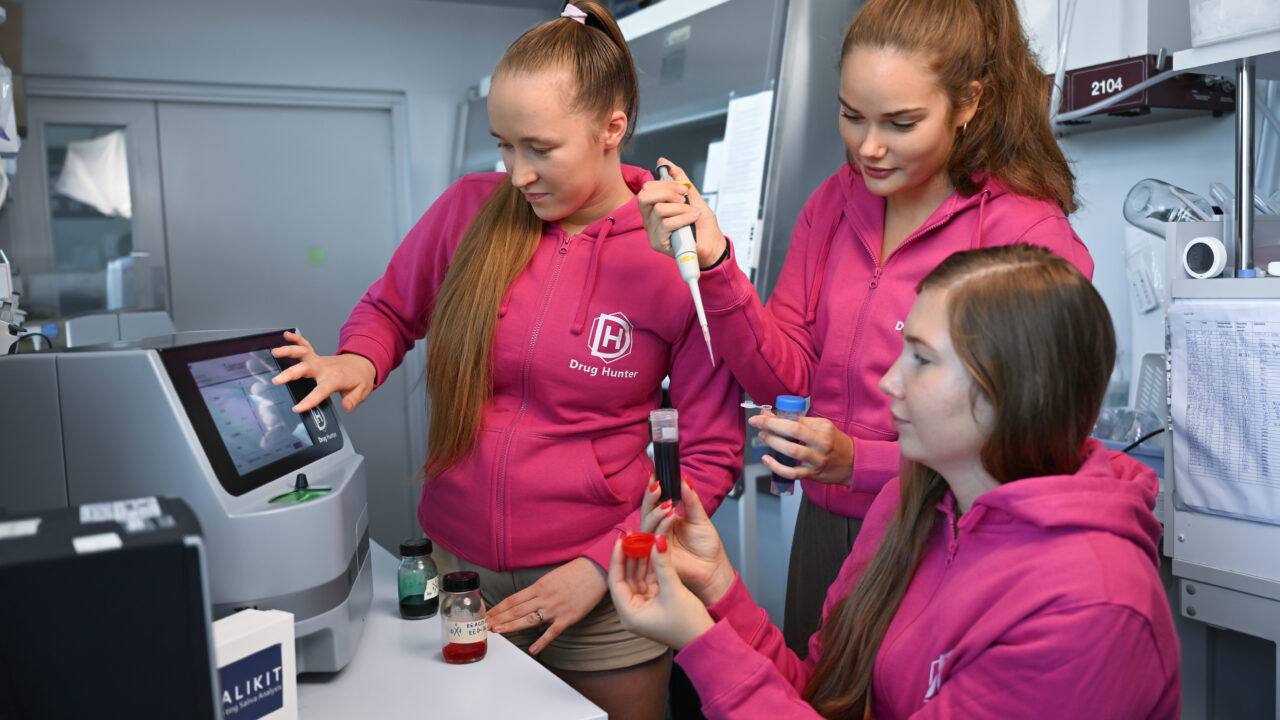
From left: TalTech School of Science doctoral student Saari Anete Loog, master’s student Elis Kägo, and doctoral student Mari-Liis Leinus with the DrugHunter in the Chemistry and Biotechnology LAB. Photo: TalTech
Time as the most valuable resource
Mazina-Šinkar admitted that building a spin-off has not been easy. Looking back, she shared one key lesson: time is the most valuable resource. “You can’t do everything at once – you have to decide what truly matters and move forward step by step.”
She acknowledged that in deep tech, progress inevitably takes time. On one hand, scientific validation is required; on the other, a functioning product and regulatory compliance – and these three elements rarely move in sync. According to Mazina-Šinkar, success in deep tech is only possible with patience and clearly defined priorities.
What she found most nerve-racking was not the scientific or technological side, but the administrative burden that comes with establishing a spin-off – intellectual property agreements, documentation, negotiations, and waiting. “These processes can take years. The paperwork phase is difficult because, from the outside, it can seem as though nothing is happening.”
Mazina-Šinkar admitted there were moments when she felt like giving up. “But then you realise that if you stop, no one else will carry the idea through to the end.” She said it was precisely these moments that taught her perseverance and the ability to stand up for her ideas – a skill that is essential in entrepreneurship every single day.
“You can’t do everything at once – you have to decide what truly matters and move forward step by step.”
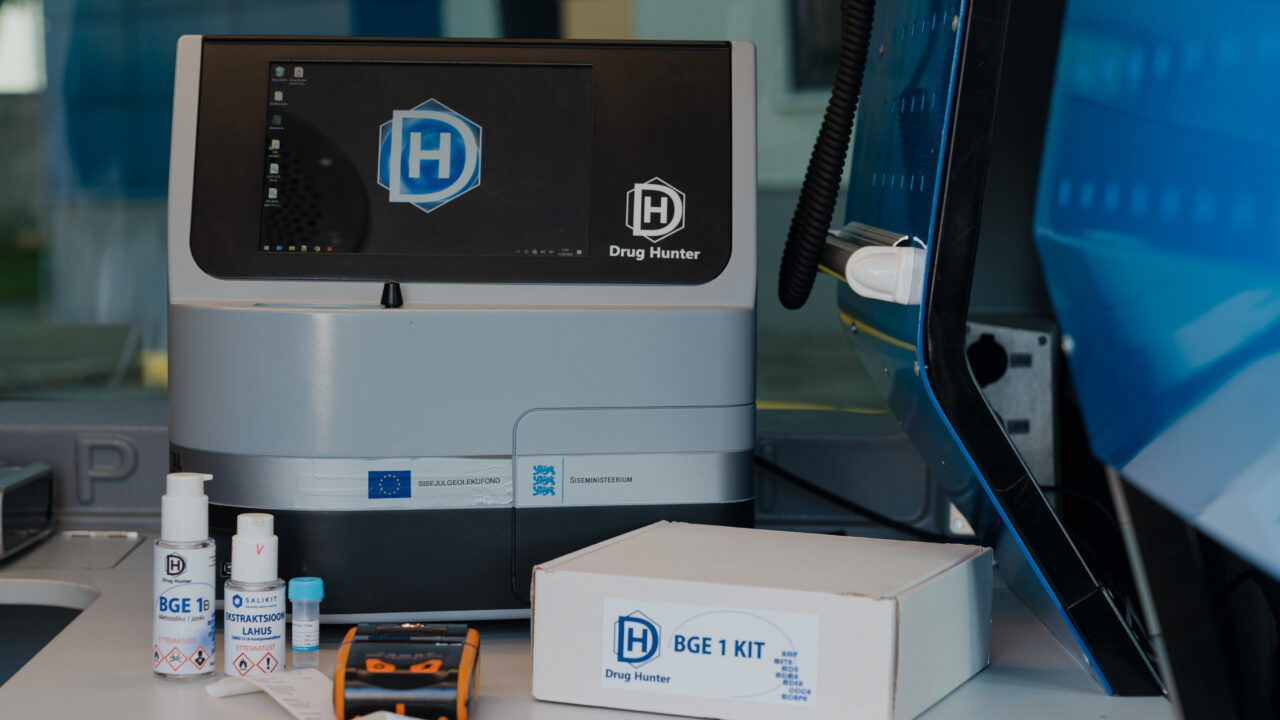
The SafePas device makes testing significantly more accurate. It measures not only the presence of a substance in the body, but also the quantity – how much of the illegal substance is actually present in the saliva. A quantitative result also allows for estimating the time of use: if the level is high, the substance was used recently; if low, it may be a residue from several days ago. Photo: SafePas
Comment. Andres Kirsing, Head of the Criminal Procedure Group at the Development Department of the Police and Border Guard Board
The joint project between Drug Hunter and TalTech first reached us in 2020. The scientists’ aim was to develop a drug analyser capable of delivering laboratory-grade results, which could be used by the Estonian police to detect narcotic use and intoxication. Our role was to provide feedback to the project initiators and contribute development ideas, which is why we tested the devices in real-life scenarios.
Active testing of the new tool took place from 2021 to the first half of 2022. We evaluated the device’s effectiveness at major events in Estonia – such as festivals – as well as during traffic surveillance operations. The results of the Drug Hunter analyser were used in criminal proceedings for the first time in July 2022.
At the end of the project, two Drug Hunter analysers were handed over to the Estonian police. These devices are far more convenient to use than rapid tests. Drug Hunter is based on capillary electrophoresis (CE) technology, which can detect the presence of narcotic substances in saliva samples in under five minutes.
Unlike traditional methods – such as one-time indicator tools or saliva strip tests – which require complex laboratory analysis and often yield false positives, the new device is both simple and precise. Today’s rapid tests simply cannot compare to this technology. People also tend to have greater confidence in technology-based solutions than in conventional strip tests.
During one police operation, we tested a driver whose rapid test indicated cocaine use. Although he initially denied taking drugs, and under normal circumstances we would have had to take him to hospital for confirmation, we offered him a follow-up test using Drug Hunter. He agreed, and when the result once again came back positive, he admitted there was no point in arguing with the technology and confessed to using drugs. In this way, Drug Hunter significantly shortened the entire procedure. Moreover, at the end of the test, the device prints a summary listing the substances detected in the saliva, including drugs. This printout is immediately added to the evidence in the criminal case file.
Unlike traditional methods – such as one-time indicator tools or saliva strip tests – which require complex laboratory analysis and often yield false positives, the new device is both simple and precise. Today’s rapid tests simply cannot compare to this technology.

